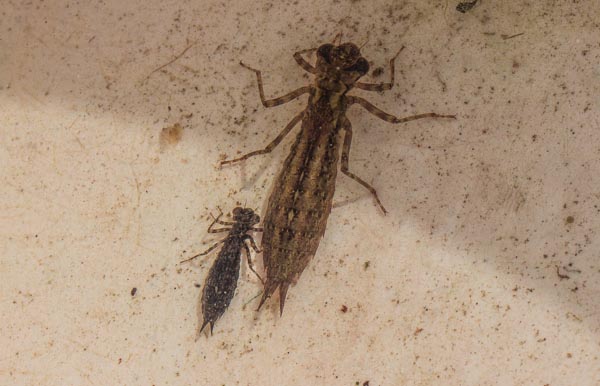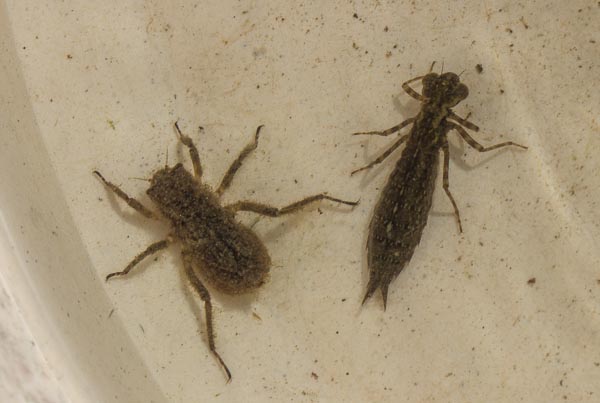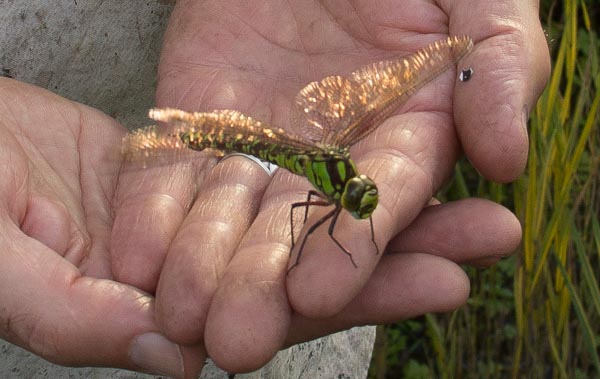27 October 2013
I’ve been surprised and pleased by the number of dragonfly larvae I’m finding in the pond this year. It has been necessary to net the blanket weed in the pond every day or two while the weather has been sunny: its growth is increased by sunlight. If you haven’t ever met blanket weed, it’s made up of hundreds of green, slimy filaments that form in the water and rapidly turn you nice clear pondwater into pea soup, although with less flavour (I presume – I’ve never tasted it!) Sometimes I pull it out by hand, and another way is to twine it round a stick or something similar, but I’ve been using the net to remove things like dead leaves at the same time, and it’s probably because I am using the net that I’m really noticing the dragonfly nymphs, as they wriggle around in the green slime.
To share them with you, I caught some and put them in an old washing up bowl. They don’t like not having places to hide, so I only kept them as long as it took to take the photos.
Together with the larva in the photo above are some backswimmers (also called water boatmen) – acquatic insects who have mastered the nifty art of swimming upside down; they are voracious predators, and carnivorous. I actually caught a couple of them apparently attacking the dragonfy larva, so I soon got them back into the pond.
The two very differently sized larvae in the photo above may be different species, but I suspect they are the same species at different stages of growth. Dragonflies, like butterflies, do all their growing in the larval stage, and the adults emerge fully grown. I think they are Southern Hawkers, as we have seen the females laying in the pond, and have sometimes seen the emergence of the adults (magic!). The large one will emerge next year, but the smaller one may be with us for another year or even two before it is fully grown and comes out of the water.
These two, however, are definitely different species, and I suspect the large one is again a Southern Hawker, while the smaller, wider one is a Broad-bodied Chaser. The differences will be echoed in the adult dragonfly: the Broad-bodied Chaser is just that: broad in the body but not so long, with a blue male, and an olive brown female. The Southern Hawker is a very long, sleek dragonfly, with the male being turquoise blue and the female green; it is a female in my husband’s hands below – she seemed to be stuck in among the reeds, so he waded in to get her out and she obligingly stopped to have her picture take.
Dorset is an important county for dragonflies, with 28 out of the 39 British species breeding. One of the biggest threats to dragonflies is the lack of (still) water for the larvae to live in, so if you can have a pond in your garden, please do: they are amazing creatures. If you want to know more, see the Dorset Dragonfly Group website.



